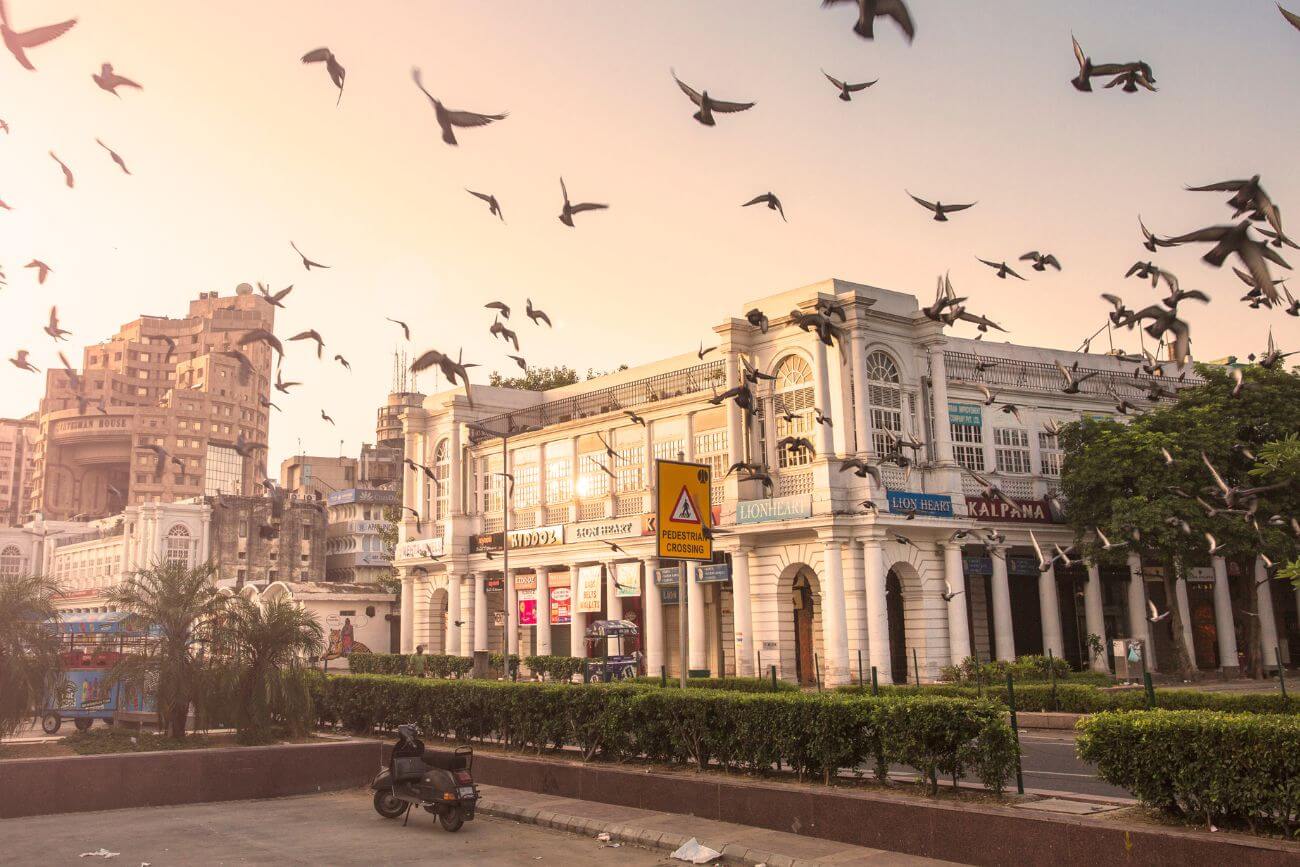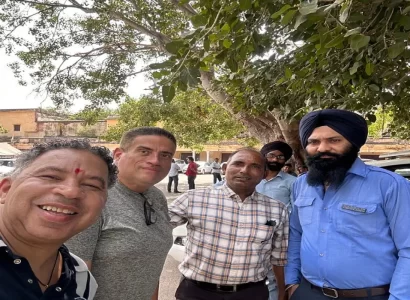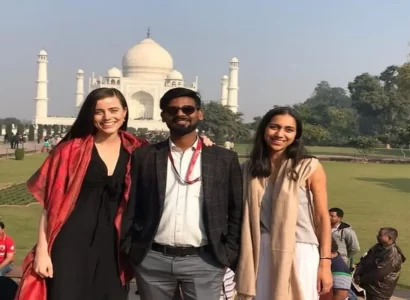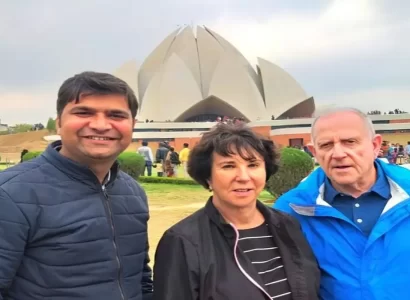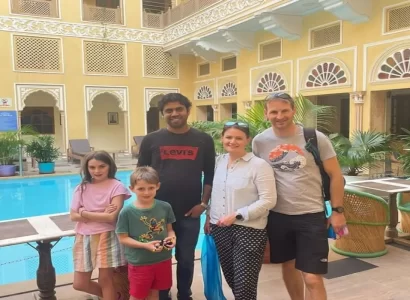Connaught Place is a frenetic business and financial hub, cantered on a ring of colonnaded Georgian-style buildings with global chain stores, vintage cinemas, bars and Indian restaurants. This market has two circles.
The Inner Circle consists of Blocks A to F. The important shops and showrooms here include Adidas Originals, Allen Solly, Bentley, Bon Ton, Cantabil, Gas, Johnson Watch Company, Kalpana, Lee, Louis Philippe, Neelkanth Jewellers, Nike, Orra, Park Avenue, Pepe, Proline and Fila, Roopchand Jewellers, Snowhite Square, Wills Lifestyle.
Mohanlal Sons promises to give you ready or tailored attires to suit every occasion. Known for its quality and good service, you will find here a wide range of shirts, trousers, jackets, suits, kurtas and sherwanis. The Outer Circle consists of Blocks G to P. Showrooms like Digjam, Lacoste, Omega, Rado, RL Exports and TAG Heuer lie in this circle.
Architect- Robert Tor Russell, chief architect to the Public Works Department (PWD), Government of India.
Named after Prince Arthur, 1st Duke of Connaught (1850–1942), third son of Queen Victoria, who visited India in 1921 and laid the foundation of the Council House (now Sansad Bhavan, or Parliament House).
HISTORY
Prior to the construction of Connaught Place, the area was a ridge, covered with kikar trees. Residents of villages including Madhoganj, Jaisingh Pura and Raja ka Bazaar were evicted to clear the area for the construction of Connaught Place and the development of its nearby areas.
The villages were once situated along the historic Qutub Road, the main road connecting Shahjahanabad, the walled city of Delhi (now known as Old Delhi) to Qutub Minar in South Delhi city since the Mughal era.
The displaced people were relocated in Karol Bagh to the west, a rocky area populated only by trees and wild bushes. However, three structures were spared demolition. These were Hanuman temple, a Jain temple in Jaisinghpura and the Jantar Mantar construction work began in 1929 and was completed in 1933.
The area today falls under the jurisdiction of New Delhi Municipal Council (NDMC) and is therefore allotted a high priority in term of funds for maintenance and upkeep
ARCHITECTURE
Connaught Place’s Georgian architecture is modelled after the Royal Crescent in Bath. Connaught Place had only two floors, which made almost a complete circle intended to house commercial establishments on the ground with residential space on the first floor.
The circle was eventually designed with two concentric circles, creating an Inner Circle, Middle Circle and the Outer Circle with seven roads radiating from a circular central park known as Radial Roads.
- Regal cinema, the first cinema in Connaught Place, opened around this time and went on to host popular concerts, theatre groups, and ballet performances. The Odeon and Rivoli followed the Regal, while the Indian Talkie House opened in 1938. The Regal, the first theatre in the area, was opened in 1932 by Sir Sobha Singh. It was designed by architect Walter Sykes George and mainly hosted stage performances. soon started morning and afternoon movie shows. The next theatre to be built was the Plaza in 1940, designed by Sir Robert Tor Russell, the architect of Connaught Place itself. It was owned by director and actor Sohrab Modi until the early 1950s.
- The Odeon was built in 1945 and had the city’s second 70mm screen after the “Shiela Cinema” in Paharganj.
- The Rivoli, close to the Regal, was the smallest theatre in the area. Half a century later most of the theatres were still running, although most had changed ownership.
- The Plaza and Rivoli are now owned by a multiplex giant PVR Cinemas, while the Odeon is a joint venture with Reliance Big Pictures.
- The Imperial, New Delhi’s first luxury hotel opened in 1931 on Queen’s Way, (modern-day Janpath) and eventually became a haunt for the royalty and a place for political discussions. It was here that Jawaharlal Nehru, Mohandas K. Gandhi, Muhammad Ali Jinnah and Lord Mountbatten met to discuss the Partition of India and the birth of Pakistan
- The empty block of the Inner Circle came into use in the late 1970s with the construction of an underground market, the first in Delhi, Palika Bazaar at the junction point. Stretching up to the Outer Circle, it also came with an adjoining underground parking lot.
- Also in the 1970s, the State Emporiums on Baba Karak Singh Marg radial emerged.
- However, a major alteration in the skyline was the addition of red sandstone (inspired by the historic Red Fort) and glass skyscraper, the Jeevan Bharti building (LIC building), designed by architect Charles Correa.
- Two of the five terrorist blasts that occurred during the 13 September 2008 Delhi bombings were in Connaught Place. Ten people were injured after police and witnesses said that the bombs went off in garbage cans in and around Connaught Place. There was also one bomb blast in nearby Central Park. Authorities also discovered two undetonated bombs in Delhi, one located at the Regal cinema complex in Connaught Place. As a response, all rubbish bins were removed from the area for security reasons.
- FLAG– The first known Indian to hoist the tricolour flag at Connaught Place is Padma Shri Mir Mushtaq Ahmad, the first Chief Executive Councillor of Delhi. Prior to independence, when Connaught Place was considered the heart of imperial British India, he would hoist the tricolour at the bandstand in Central Park each year on 26 January. On 7 March 2014, the largest known Indian national tricolour at that time (now second largest) was hoisted at the centre of Central Park, measuring 90 by 60 feet (27 by 18 m). The pole on which it is hoisted measures 207 feet (63 m)
- Janpath (meaning People’s Path, formerly known as Queensway), is one of the main roads in New Delhi.
IMPORTANT INFORMATION-
Timings : Shopping: 11:00 AM – 9:30 PM (except Sunday)
Entertainment: 11:00 AM – 1:00 AM
Nearest Metro Station – Rajiv Chowk
What to visit nearby– Gurudwara Bangla Sahib
Connaught place is undeniably a reflection of Indian British past. The Georgian structure of art along with its horseshoe structure of designing is appreciation worthy.
